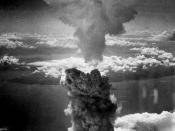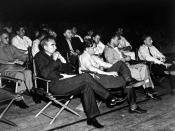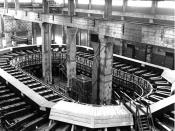The Manhattan Project: Dawn of the Atomic AgeThe Manhattan Project was the US and British led project that, during World War II, developed the first atomic bomb. The project ended up costing $2 Billion ($28 billion in 2008 based on the CPI (Wikipedia Manhattan)) and involving 175,000 people at four different sites. Many famous people worked on the project including 5 Nobel Prize winners and 3 future Nobel Prize winners (Szasz). The end result of this project was the development of the two most powerful weapons ever used during a war.
The project has its roots in the early 1900s when human understanding of the atom grew. Before this time, that atom was though to be a homogenous, undividable mass. The back-to-back discoveries of radium, the X ray, the electron, the proton, the neutron, as well as alpha, beta, and gamma rays changed this view forever. These new discoveries fueled new research.
One of the many studies was on uranium, the largest and most complex of the natural elements. This was done in an attempt to find a new source of energy (Szasz).
In the 1930s, several parallel discoveries advanced the study of the atom and introduced the world to fission and all the possibilities inherent in it. In 1933, the Hungarian scientist Leo Szilard postulated that if the right material was found and its atom could be split and made to release neutrons, a self sustaining fission reaction could be formed and nuclear power could be created. During that same year, French scientists Irène Joliot-Curie and her husband Frédéric Joliot discovered artificial radioactivity and a scientist in Rome, Enrico Fermi, split the atom. The term fission was first used when two German scientists, Otto Hahn and Fritz Strassmann, split Uranium into Barium and Krypton (Szasz).
The seeds of the...


